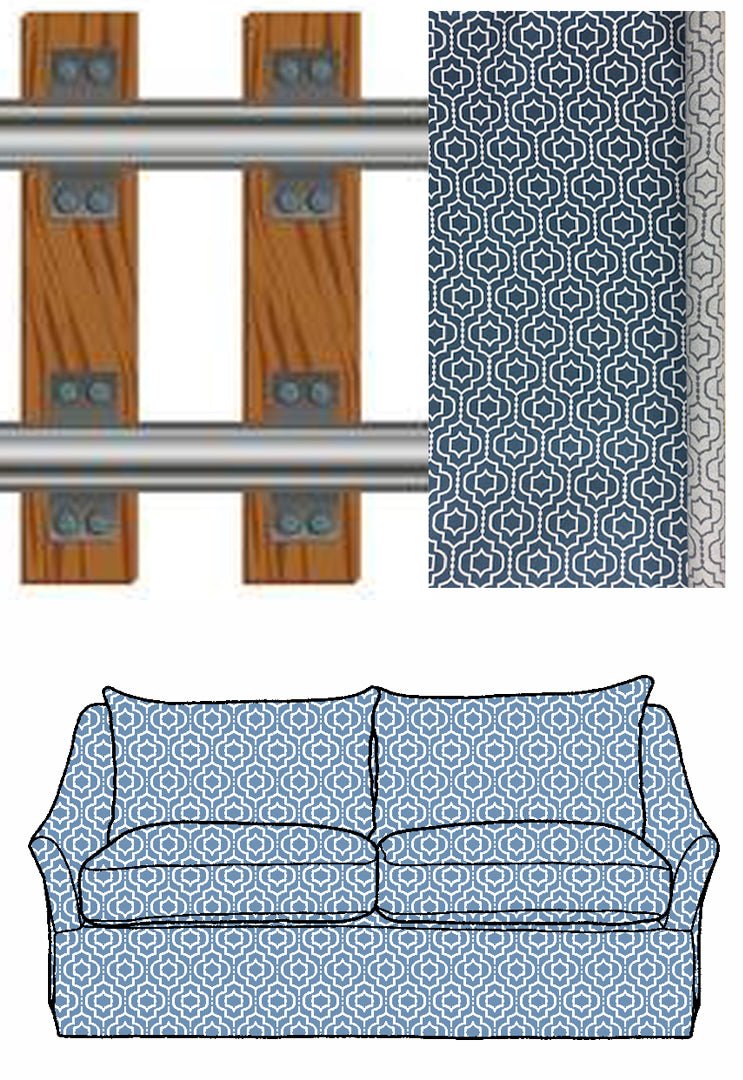
What does railroaded fabric mean?
What is a “railroaded” fabric?
Railroaded fabric is best described by how the design is oriented on the roll. The design will be created from selvage to selvage, or the width of the fabric. Say your fabric is 54 inches wide. The design is oriented perpendicular to the 54 inch wide roll. This is due to the fact when you're weaving, you want your filing yarns, or the weft latitudinal yarns, to create the designs. You can have more color variation this way. If the design is created up the bolt or roll, the colors in the design are limited to the the colors of the warp yarns, or the longitudinal yarns.
A common term used in home interior textiles is the term “railroaded” when referring to the orientation of a fabric. When fabric is railroaded, it means the design is created from selvage to selvage. The selvage is the edge of the fabric usually referred to the width. So if you have a striped upholstery fabric, the stripes would run from selvage to selvage and not all the way up the roll.

Designer fabrics are made in (usually) a 54″ width. This means the fabric is woven in a piece 54″ wide, and in nearly unlimited lengths. After it is woven, the fabric is rolled onto a bolt for shipping and storage, so there are no creases in the fabric. Weaving fabric “railroaded” allows you to cover the entire width of the sofa in one horizontal piece of fabric – without seams. Some plain fabrics can be turned in any direction, so the importance of railroading a fabric is not as important when dealing with these plains; however, when considering a Jacquard woven fabric with a specific design (often with a larger repeat or clearly recognizable image), whether a pattern is railroaded or not can make a huge difference in its application capabilities.
There are times when the common 54" width of fabric is not enough to run the span of a piece of furniture. For instance, if you have a very long cushion that exceeds the width of the fabric, instead of putting in a seam or two you could try to find a railroaded pattern and you could run right across with no seams. The same would apply to sofa backs as well. Sometimes it is more efficient to cut fabric that is railroaded even if you don't have a large span because the pattern may be unusual and difficult to match.
On applications such as pillows, many Jacquard patterns can be used in either direction due to the smaller cut size required. In the illustration below, consider the iron railroad “tracks” the “selvages” (or edges) of the roll of fabric. The pattern would be considered cross ties. If the intended top and bottom of the design motif is pointing toward the two iron “tracks,” the fabric can be woven at any length to span the length of the sofa back and beyond. If the intended top and bottom of the design motif is pointing right and left along with the “cross ties” of the railroad tracks, the pattern could look odd when applied to the sofa back. Most of our Revolution Performance Fabrics are woven railroaded. In rare occasions, they may be run “un-railroaded” which is often referred to as being woven “up the roll.”


Comments
Leave a comment